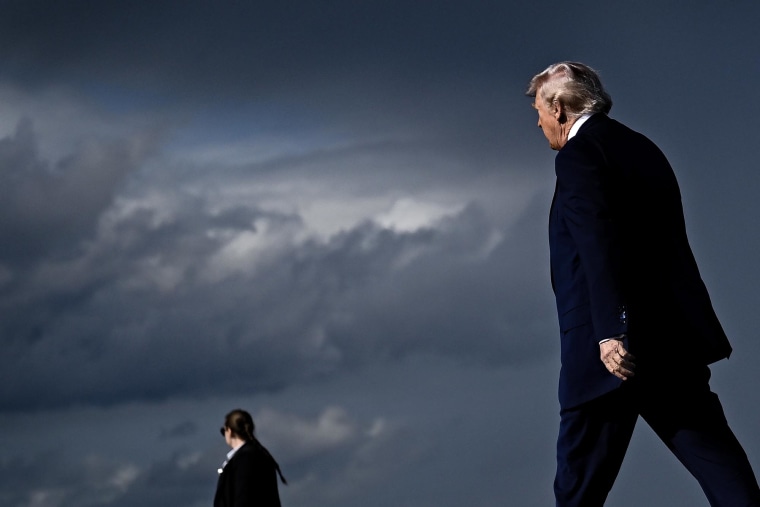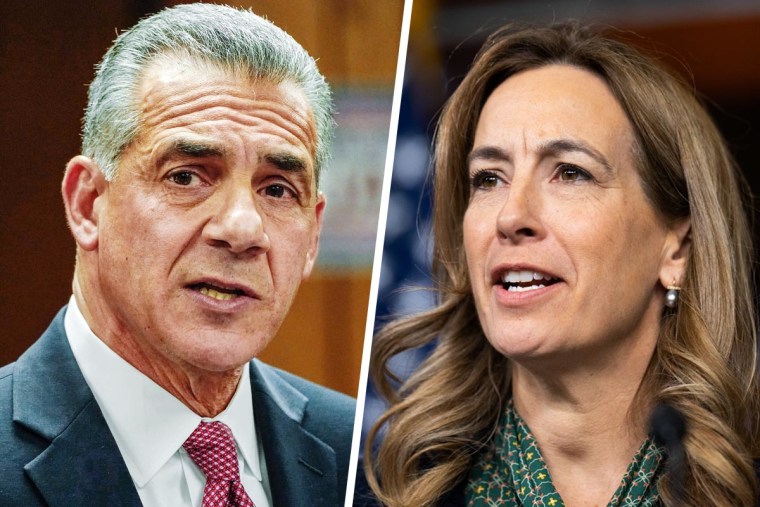
The matchup for New Jersey’s gubernatorial election is set, but looming over the contest will be a name that won’t be on any ballot: Donald Trump.
Rep. Mikie Sherrill, who secured the Democratic nomination in Tuesday’s primary, is already running ads that attack Republican Jack Ciattarelli for his ties to the president. Ciattarelli, who was also the GOP’s nominee in 2021, romped to victory in his party’s primary after successfully cultivating Trump’s support.
In focusing on Trump, Democrats have history on their side. New Jersey voters have a strong tendency to elect governors from the party that doesn’t control the White House. This has been the case in all but two races over the past four decades.
Plus, Democrats have run this playbook successfully in New Jersey before. Eight years ago, during Trump’s first term, Gov. Phil Murphy scored a 14-point win over Republican Kim Guadagno. Murphy had sought to tie Guadagno to Trump, whose approval rating in New Jersey that fall stood at just 33%. (Murphy was also aided by the cratering popularity of outgoing Republican Gov. Chris Christie.)
Republicans are counting on the Trump factor playing differently this time around. And, at least for now, there are some key variables they can point to with optimism.

One is the result of last year’s presidential race, when Trump lost New Jersey by 6 points to Kamala Harris. That was a far cry from his 16-point loss in 2020 and his 14-point defeat in 2016. From the outset of the 2017 gubernatorial race, it was obvious that Trump would be a major electoral liability for the GOP. That’s not as clear this time around.
In fact, a PIX11/Emerson College poll conducted a few weeks ago showed Trump with a 47% job approval rating in New Jersey. That’s far higher than he fared during the 2017 campaign, or for that matter, at any point during his first term. It’s also higher than the 40% approval rating for Murphy, who is term-limited and provides Ciattarelli with his own opportunity to tie his opponent to an unpopular leader.
That said, there hasn’t been any polling in the state since mid-May. It’s possible Trump’s standing has shifted in response to the unrest in Los Angeles. It’s also possible it will shift for other reasons between now and November. For now, though, it appears to be in a different place than in 2017.
A key question is whether Trump’s improved performance in New Jersey last year signals a broader shift in the electorate away from the Democrats and toward the GOP. His gains came heavily from nonwhite voters, particularly Hispanics and Asian Americans, mirroring what happened nationally. But many of these voters had either not voted before or had done so infrequently. Did they come out only because of Trump himself or are they converts to the GOP as a whole?

The early indicators from elections this year have not been very encouraging for Republicans, who have suffered a series of defeats amid high participation from Democratic-friendly demographics that Republicans haven’t been able to match. But those off-year elections have been relatively low-wattage affairs. New Jersey’s gubernatorial race will attract much more interest and overall turnout, giving the GOP a better shot at leveling the playing field.
Republicans can take some heart from voter registration statistics. Since last November, the number of registered Republicans in the state has remained flat, while Democrats have shed just over 60,000 enrollees. This is a reversal from 2017, when Democrats were outpacing Republicans in new registrations.
There’s also some history Republicans can point to. Democrats have controlled the New Jersey governorship for two consecutive terms now, with Sherrill seeking to make it three in a row. This is the sixth time since 1981 that a party has tried for a third straight term. In the previous cases, they all failed to win it.
 Latest World Breaking News Online News Portal
Latest World Breaking News Online News Portal






